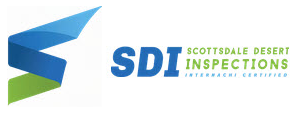The inspection consists of:
- a non-invasive, visual examination of the readily accessible, visible, and installed systems and components of the building, as outlined in the IAC2 Mold Inspection Standards of Practice;
- moisture, temperature and humidity measurements;
- at least three air samples (one indoor and two outdoor); and
- possibly one surface sampling at an area of concern.
- moisture intrusion;
- water damage;
- musty odors;
- apparent mold growth;
- conditions conducive to mold growth;
- the results of a laboratory analysis of all mold samplings taken at the building; and
- any system or components listed in the Standards of Practice that were not visually examined, and
- the reasons they were not inspected.
Mold in an Arlington, AZ home can be a significant concern, as it can affect both the structure of the home and the health of its occupants. Mold thrives in damp environments, so common areas of growth include bathrooms, kitchens, basements, and anywhere water damage or high humidity levels occur. In a hot, dry climate like Arlington’s, mold is usually less common but can still develop if there are plumbing leaks, poor ventilation, or roof damage that allows moisture to accumulate.


